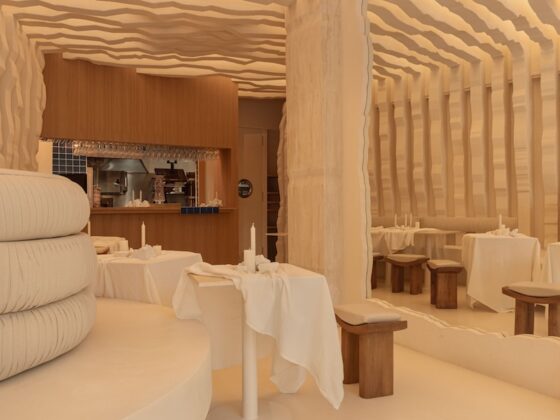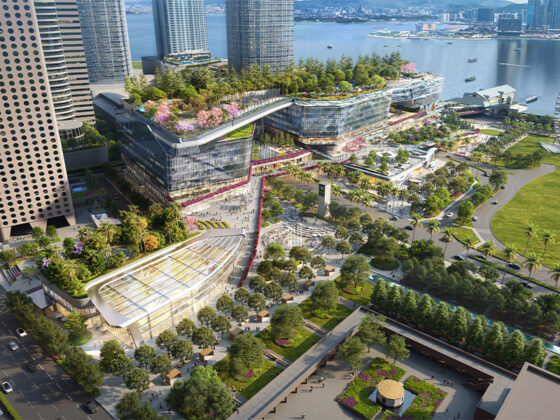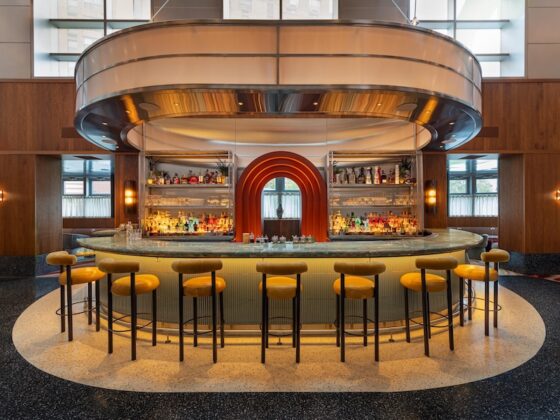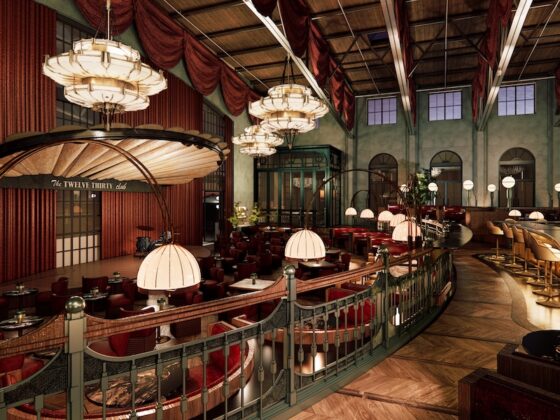2022 started as a continuation, of this once-in-a-generation event, the COVID pandemic, but shifted mid-year and we finally got to see the beginnings of a resurgence in travel that, to many, was much more than expected.
As such, 2022 has been a year of change for the world and indeed, the hospitality industry. Hotels and restaurants around the world have seen changes in guest behavior, QR codes suddenly became a thing again, paying by phone was no longer a novelty. But, expectations, and demand changed as well, that technology isn’t a fun thing to try anymore, it is a minimum. Guests expect tech enabled experiences, many of which they wont consider a plus if available, if not however, it would easily be perceived as a negative.
The five major themes we saw in 2022 are:
- Distribution – evolving trends with direct revenue
- Staffing & Operational Efficiency – an unexpected problem from the pandemic
- New Technology – novelties? or just minimum requirements?
- Digital Transformation – where does this fit with better revenue
- Sustainability – saving costs and preserving the environment
Over the past 12 months, we had the opportunity to interview many hospitality insiders and technology experts, who shared with us their experiences, opinions, and predictions. You can look back at the full list of hotel technology articles we published in 2022 on this link.
We covered quite a lot of ground. From a renewed sense of urgency when it comes to distribution, to different strategies for finding efficiency in staffing and operations, adoption of new tech in operations, payments, security, and automation. Finally, we’re still seeing plenty of early adoption of both digital transformation strategies and sustainability initiatives.
We interviewed some of the key leaders at Shiji, as well as sifting through the insights of the past year to glean some of the key points that we believe defined 2022 and point towards trends for 2023.
“Having traveled around the world to meet with our teams and our customers, my takeaway from 2022 is that our industry really has huge potential ahead. That said, we need to make technology an assistance for staff and guests, for example systems that reduce repetitive tasks so staff have more time focus on the guest which is the long term priority for the industry – the people, staff and guests.”
Kevin King, Chief Operating Officer, Shiji


1. Distribution
Social bookings is the next frontier in direct revenue. This hybrid model combines technology and custom-built booking end-points but with an ad-generated distribution model. Built into TikTok, WeChat, Instagram and other channels this is where hotels have a chance to bring direct revenue to the mobile space.
The topic of distribution is always one that garners plenty of commentary. That was especially true this year, which makes sense as, with the pandemic slowing, hoteliers want to maximize distribution to generate the best revenue possible.
We revisited our long-running hospitality distribution technology infographic again this year to see how the industry’s evolved. The main change we noticed here, and indeed we believe this to be reflective of distribution as a whole, is in the growth in automation. This year we saw the entry or growth of a number of companies that leverage tech-enabled automation to get more done and innovate, pushing the rest of the industry forward.
In China, we see a parallel yet different picture when it comes to distribution. The Chinese market, in comparison to the western world, skipped the era of the PC, browser, and credit card payments. It wasn’t until 2014, with the launch of 4G that Chinese internet users skyrocketed to 90 million by the year-end. Online payment solutions, OTAs, and hotel distribution grew quickly. Many new platforms and super-apps were launched, with Alibaba and WeChat operating in the space. Today, the thing to keep an eye on are these super-apps, and their ability to harness large amounts of customer data and allow for increased functionality.
Another trend we explored inspired by trends in China, but certain to spread globally, is a concept we’re calling Social Booking. This is where hotels build mini-apps within super-apps like WeChat, bypassing traditional booking engines and even the hotel’s own website. These apps suggest hotels and rooms based on user data, cost less to build, and are more effective in conversions.


2. Staffing & Operational Efficiency
The return to travel reminded us that our industry’s biggest resource is people. So use tech to support them and relieve them of repetitive, low-added-value work and incentivize them to be with the guests, adding service and care– the real value work. Our very own ReviewPro released a report this year showing that there are more guests but lower guest satisfaction across the hospitality industry, proving it’s never been more important to offer guests great service.
We know that pre-pandemic demand is back, but labor has not made a comeback in all cases. Our industry needs to adapt, and a core part of this adoption is flexible technology solutions. By providing team members with the right technology, we can empower them to offer the best guest experience, as well as, increase operational efficiency.
– Dan Bell, SVP Shiji Americas
It’s no secret that hospitality businesses around the world have struggled to keep staff (and then struggled to keep them well and healthy). While travel bounded back so feverishly that the term “revenge travel” was coined, many hospitality businesses from restaurants to airlines to hotels struggled to keep up, with fewer team members on staff and available. This was due to the obviously increased workload, but also poor pay, long hours, and lack of work-life balance.
A concept that seemed to be at the core of this issue, aside from external market forces, was the moral imperative to take good care of staff. As Gefferson Alves, GM of Ba’ra Hotel Joao Pessoa told us, hotels are responsible for taking good care of their staff, paying them well, and encouraging them to succeed. The extra expense of time and resources to make this happen pays off tenfold in the long run, according to Alves, and is the foundation for retaining staff.
Finally, it’s worth mentioning how technology can be leveraged to improve operational efficiency and staff satisfaction. As Stephen Burke, Founder of Robosize Me told us, automated technology, “also helps the hotel to get those job hours down to more easily fit somebody’s lifestyle and provide work-life balance to make the job more palatable at that salary level.”


3. New Technology
For an industry that was once a pioneer in new technology, hospitality has gone through a technological winter in the last decade, with consumer technology outpacing the industry by a healthy margin. By necessity or by desire, the hotel industry has begun to address this and is now seeing how technology is the biggest resource to improve the guest experience.
In this era, it seems technological innovation slows for nothing or no one, and 2022 was no exception. That said, prior to the pandemic, our industry could be slow in adopting new technology. However, the abrupt stalling of travel during the early pandemic forced hotels to pivot, adopting whatever technology would make guests feel safe enough to patronize their businesses. This technology included cashless payment, QR menus and links, and other contactless solutions, especially for check-in/out and placing food orders.
RELATED
The core value of digital transformation is innovation. We’ve seen many hotels in the Asia Pacific adopting new technology in the last few years, from mobile check-in/check-out and mobile ordering to contactless payment, e-signature, and kiosk solutions. As guest experience requirements are changing and technology is constantly evolving, hotels need to be nimble to adapt and be committed to their strategy. A long-term commitment with short-term approach and actionable deliverables will help hotels navigate their digital transformation journey.
–Nikkie Randhawa-Singh, SVP, Shiji APAC
A core component of hotel operations continues to be the PMS. To see how far we’ve come, our infographic on the evolution of the PMS is a useful resource. It tracks the pre-PMS days, up through the past decade and into today where we look at cloud-based APIs and systems and modern mobile uses.
In 2007, many people assumed the PMS would be subsumed by OTAs or CRMs, however, in 2022, PMS is still not only still used, but as mentioned earlier, is a core tool in the average hotel’s arsenal. Today, the conversation around PMSs and data sovereignty, the transferability of data across the cloud, and the next stage of this technology is one many industry experts are paying close attention to.
Some of the most obvious developments in payment technology, readily apparent in the F&B space, have been the widespread adoption of cashless payments, online and mobile ordering tools, and related delivery automation.
Among the most exciting tools emerging this year are Robotic Process Automation (RPA) tools. They’re easier to add to your existing workflow and could be considered technology quick wins. These work, on an abstract level, somewhat like algorithms in that a human tells a computer to do something and the “robots” do that thing for you. These tools can improve efficiency in many areas, especially helping to alleviate staff shortages.


4. Digital Transformation
Connecting the hotel and its services to the guest through digital tools is not science fiction anymore. Guests interact with most of the world through the digital device in their pocket. They checked-in for their flight on their phone, they ordered and paid for their ride on their phone, maybe even ordered food on their phone. Hotels need to embrace the digital transformation to line up with their guests’ expectations.
More than ever before in our industry, technology lies at the core of solving almost every single challenge that we are facing. Hotels must take advantage of it to ensure outstanding digital guest experiences, and upgrading the systems is key to keep up with the present and future business opportunities.
Wolfgang Emperger, SVP & GM Shiji Europe
When we talk about new hospitality technology, one of the most important topics emerging at the forefront of conversations this year was “digital transformation” or, as some call it, “digitalization.” Simply put, this is the process of hotels integrating technology into their workflows, or perhaps replacing physical processes with digital ones.
Good examples of this transformation are the change from physical room keys, credit card imprint machines, and calculators to digital keys, contactless payment, and automated billing. We also saw the move to PMS and POS systems, and then CRMs, and today we see the beginnings of the use of AI within our industry.
The big question, and one, it could be argued, that has never changed is, “Is it good for the guest?” If, when considering adopting new technology, the answer is not a resounding “yes,” it may be smart to look into it further. When we really consider this question, it could cover everything from data security to how relevant ads are to the expediency of service. Technology certainly touches each of these elements, so it’s up to the hoteliers to determine what technology serves their guests best.


5. Sustainability
Sustainability is now a double win for the industry. Finding ways to reduce power usage by using low-voltage systems, reducing waste, and optimizing hotel resources. But, hotels need to watch out that this is done with the guest and not as a way to increase cost and reduce quality.
Sustainability is an aspect that every property should focus on moving forward. Nowadays, more guests tend to not only value their experience at hotels, but also look at the sustainable practices that these properties are implementing. In addition to reducing many costs, green initiatives can be a turning point during the hotel selection process for many guests.
Anthony Hunt, VP Strategy & Product, Shiji
In this category, there have been many strides in technological advancement. Of course, there are solar panels and other standard green initiatives but there are also techniques and tools for lowering energy usage via low-voltage DC appliances and fiber optic cabling. While the installation costs may be higher, the long-term savings result in a net positive for many hotels. And of course, there’s the positive brand image that sustainability can create.








